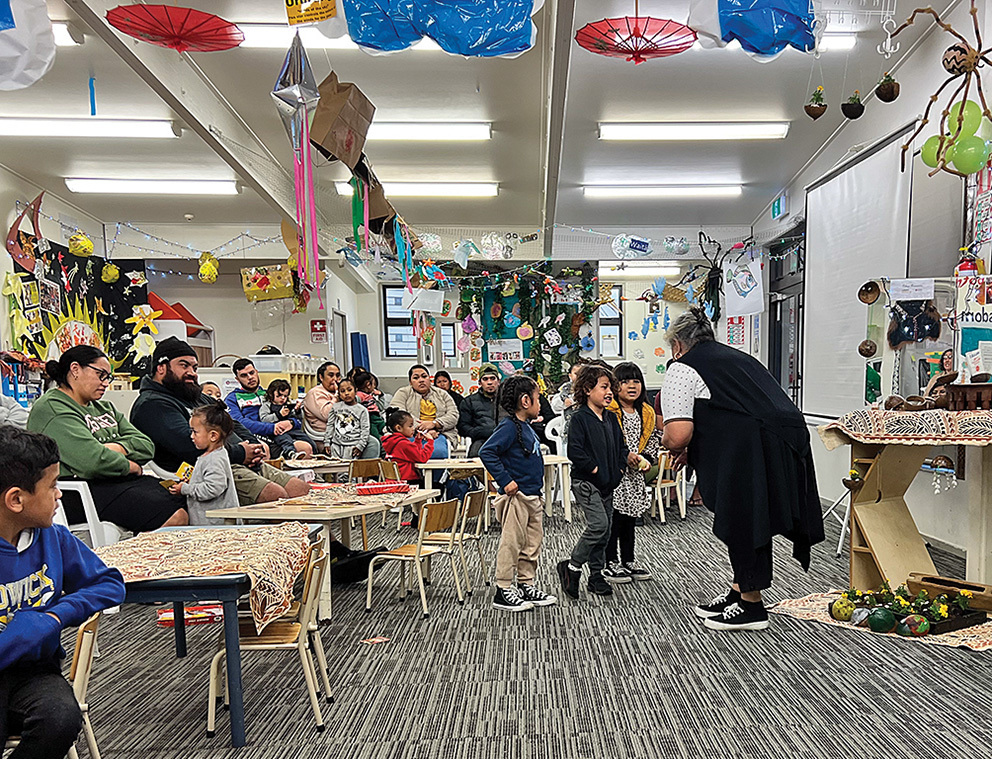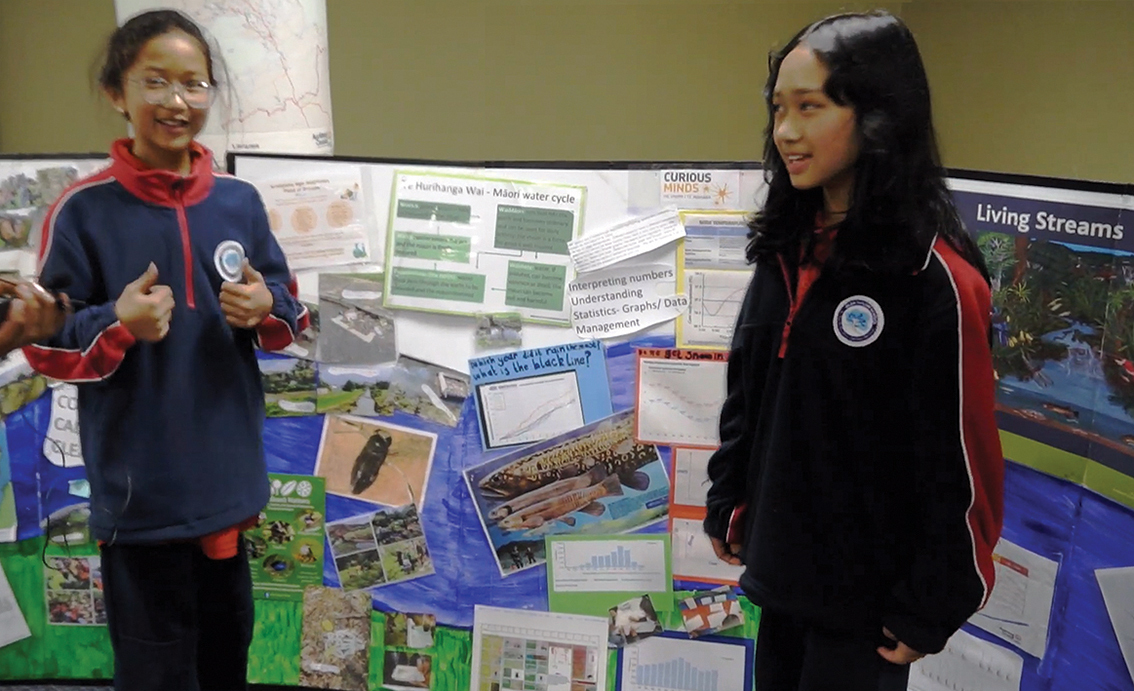Conversation
(noun): conversation; plural noun: conversations
A talk, especially an informal one, between two or more people, in which news and ideas are exchanged.
Conversations are essential for student learning. They can begin in the classroom, where a teacher introduces new STEAM (science, technology, engineering, arts and maths) concepts, and then continue at home, with students sharing what they have learned with their families or implementing them into their everyday lives at social events.
In this article, WeSTEM project manager Dr Sneh Patel reflects on different conversational tools that have been used for Curious Minds project evaluations, along with the value that these qualitative methods offer for understanding student engagement and attitudes towards STEAM.
Talanoa builds stronger relationships at Pasifika Early Learning Centre #
‘E pala le ma’a ae le pala le tala’
‘Stones and rocks decay but words do not’
A vital communication tool for Pasifika people, talanoa is about building respectful relationships through open and reciprocal interactions. Talanoa features heavily in the teaching and assessing of student learning at Pasifika Early Learning (PEL), a group of Sāmoan aoga amata (early childhood education centres) in south Auckland. See Curious Minds South Auckland Project Showcase 2020-2022 Vol 2 for more details on PEL's Pulega Oil project.
There are different ways to practice talanoa, including verbally and non-verbally. Through the understanding of a child's facial expressions, for instance, a teacher can determine whether they have understood and are enjoying a particular subject.
PEL teacher Ofereia Tunufai-Pualau shares that talanoa will often last beyond the initial discussion. For tamaiti (young children), it can come out later in the day or later in the week, when they show their understanding differently, often through role-play, where they may begin to act out what they understand or replay what they have been doing earlier in the day.

Talanoa also complements art evaluation and drawing exercises, both of which can be effective learning evaluation tools. As many children love to draw, asking them to draw something based on question prompts can be an easy way to determine what they have learned in a project. However, it can sometimes be unclear what they have drawn.
By engaging in talanoa after a drawing session, the teachers can gauge the children's understanding and draw out the stories behind their drawings.
Timote Vaioleti, an expert in Talanoa as a research methodology, states that “historically, research has been driven by hypotheses and often by an institution's approved questionnaires. These do not require a personal relationship between the researcher and the participant to obtain the information.” 1
Talanoa provides youth with a comfortable and informal space to share their learning. It allows the evaluator to dive deeper into a student’s understanding of a subject as there is more space for follow-up questions.
At PEL, using talanoa in an evaluation is a little like a tennis match. Head teacher Liz Sio describes this as 'talanoa-mai – talanoa-atu', wherein the students give their answers and then get follow-up questions from the teachers. This back and forth continues as the teachers gain an understanding of what the student has learned from the project and how they felt about it.
At an ECE level, this talanoa enabled teachers to evaluate students’ interests of their science topic and what activities or learning they enjoyed the most.
1 Vaioleti, T.M. (2006). Talanoa research methodology: a developing position on Pacific research. Waikato Journal of Education, 12, 21–34.
Conservation chats broaden understanding for Stream Team #
Te Ararata Stream Team is a community-based conservation group that participated in the Aratakina A Moemoeā project in 2021 (see Curious Minds South Auckland Project Showcase 2020-2022 Vol 1) and the Ko Au Te Awa, Te Awa Ko Au project in 2022 (see Curious Minds South Auckland Project Showcase 2020-2022 Vol 2). The Stream Team is volunteer-driven and engages a wide collective of primary and secondary school students in place-based environmental education.
A sub-group within the Stream Team consists of young Burmese refugee students who meet weekly at a homework club in Panmure. Te Hononga Akoranga COMET interviewed the homework club students for a post-project evaluation of their Curious Minds research.
English is a second language for many of the students, so face-to-face conversations and group discussions were a particularly useful tool for project evaluations rather than traditional paper-based surveys.
As with PEL’s 'talanoa-mai – talanoa-atu', a verbal evaluation does not always flow naturally. Establishing rapport and creating a safe, comfortable environment for students to express themselves is essential.

For their project, the Stream Team created a poster board to share research results at libraries across south Auckland. They used the board as a visual aid to guide discussions and evaluate learning — as the students were asked to describe the various results that were presented and what they meant, and they sometimes did not remember the specific content or required extra prompts to get the conversation flowing.
For example, when asked what they had learned, one student responded with 'chemistry'. The question “What did you learn about chemistry?” led to a discussion around pH levels, and how a low pH can indicate an acidic environment, whilst a high pH can indicate a basic environment.
When we asked the students if they wanted to be a scientist, only one of them put their hand up. Through follow-up discussions, it became clear that the students had a narrow perception of what science was and hadn’t linked it to their career aspirations.
With further prompting, the students realised that doctors and engineers also use science skills and that even football players need to have an awareness of science through nutrition and physical education. These connections and learning would not have been made through a written questionnaire alone — conversations help to broaden student thinking and understanding.
There is no doubt that conversations are an effective tool when it comes to teaching STEAM concepts. They allow learners to share their ideas, ask questions and build understanding. It is important to consider the different ways in which people communicate, such as through talanoa and with visual or non-verbal cues, and how this can be used to make content relevant and specific to each learner.
Conversations can also be a useful tool for evaluating the learning outcomes from a STEAM project. Its reciprocal process invites follow-up questions, back and forth, which engages students and teachers in deeper reflection.
Through these qualitative outcomes assessments, we have identified how important it is for teachers to connect context-specific learning to science skills and careers and the value of collaborative, explorative teaching for engaging young people in STEAM.
Contact the STEM team to find out more about how Te Hononga Akoranga COMET can support you with evaluating the effectiveness of your STEAM engagement initiative.